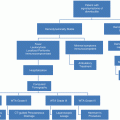Principle
Ethical imperative
Autonomy
Respect the capacity of individuals to make their own choices and act accordingly
Beneficence
Relieve pain and suffering; foster the interests and well-being of other persons and society
Non-maleficence
Do no harm; do not inflict pain or suffering
Justice
Act fairly; distribute benefits and harms equitably
Informed Consent
The concept of patient consent for medical procedures evolved over the twentieth century as a reaction to the cruelties committed by Nazi concentration camp “doctors” [14]. Up until the mid-twentieth century, paternalism prevailed, with the physician determining what was best for the patient in most circumstances. The Nuremburg code established the concept of informed consent for research participants to include a requirement that research benefit societal good, patients be informed and volunteer to participate of their own free will without coercion. The consent process as practiced in the developed world is not just a signature on a piece of paper; the process requires a competent doctor, adequate transfer of information, and consent of the patient. In the event that a patient is unable to give consent, a surrogate may consent on the patient’s behalf.
The only circumstance under which consent is not required is in the emergent care of a patient who is unable to give consent. While this is perhaps common in the setting of acute traumatic injury, the entitlement to carry out emergency treatment prevails only so long as the treatment is directed toward a life-threatening condition and the patient is unable to participate meaningfully in decision making about his or her condition. Once the immediate threat is addressed, consent for further intervention should be sought. If an individual does not recover consciousness or is cognitively impaired by injury or illness, then physicians may turn to surrogates as with any other impaired patient.
Informed consent is a legal term introduced and defined within FDA regulations in the early 1970s and outlined within the National Research Act in 1974. The basic elements of informed consent include preconditions, information, and consent [14]. Preconditions for informed consent include patient competence to make decisions and the patient’s willingness to participate in the consent process. Determination of decision-making capacity is discussed in detail in the next section.
Information is the body of facts provided by the physician or health-care provider to the patient such that the patient has sufficient knowledge to make a decision. The physician is obligated to describe not only the intended treatment or procedure and its benefits, but the associated risks must also be described. In addition, available alternatives to the recommended treatment should be offered, and the patient should be counseled as to the likely course if no treatment or procedure is undertaken at all. The information provided must not only be comprehensive, but must be comprehensible—provided in terms that the patient or their surrogate can easily understand.
The final element of informed consent is the “consent” itself. The patient acknowledges that they understand the procedure or treatment offered and authorizes proceeding with the intended treatment. Consent is usually written but may be given verbally with appropriate documentation of the consent process.
Decision-Making Capacity
A particular challenge with the geriatric population is determining whether the patient has decision-making capacity. While autonomy is valued, and it is certainly preferable to obtain consent from an informed patient directly, the patient must have appropriate insight to make an informed decision. Clinical judgments about decision-making capacity are part of everyday medical practice. A patient who is unconscious is certainly not able to give informed consent, nor is a patient who is delirious or suffers from significant dementia. Other subtle alterations in mental status may lead a clinician to question a patient’s decision-making ability. Furthermore, decision-making capacity may fluctuate with a variety of medical conditions or social circumstances.
Formal declarations regarding competence are made by the courts. The following criteria, however, may be useful as a guide to ascertain whether or not an elderly patient has decision-making capacity [16]:
1.
Acknowledgment of Relevant Information: The patient should understand their diagnosis and the proposed treatment.
2.
Appreciating One’s Circumstances: Patients must be able to acknowledge what disorder or disease process they have and understand how it will impact their life. The patient should be able to answer questions about their illness, the need for treatment, and what the outcome might be with and without treatment. If the patient does not have such insight, they may not be competent to give consent.
3.
Logical Use of Information: The patient should be able to give evidence that they have recognizable reasons for their views or conclusions. Some views may be the consequence of delirium, dementia, or other disorder. It is not the specific view or belief that is at issue in this determination but the process by which a person has the belief that is important; if the patient came to a decision that is at odds with a physician’s recommendation, this is acceptable if the decision was made in a logical fashion. If the decision is based in delusion, one may be concerned about the patient’s decision-making ability.
4.
Communication of Choices: This is a paramount condition of judging competence. The patient must be able to communicate the preference of one choice over another. A patient who says “yes” to every treatment option offered may not be appropriately integrating the information given. The identification of a choice is strengthened by evidence that the choice remains stable over time. That said, a patient may certainly change their mind but should be able to provide a meaningful reason for change.
If the above criteria are not met or if the patient has already been declared incompetent to make decisions by the courts, a surrogate decision maker should become involved in the consent process.
Advance Directives
The Patient Self-Determination Act of 1990 facilitates the right of the patient to make health-care decisions, refuse treatment, and make decisions about their future care by way of an advance directive and/or appointment of a surrogate decision maker. An advance directive is a document, often referred to as a living will, in which a person states his or her wishes regarding medical treatment in the event that they become mentally incompetent or are unable to communicate. Elements of the document frequently include wishes regarding resuscitation, mechanical ventilation, nutrition and hydration assistance, and dialysis and may also include wishes regarding organ or tissue donation. Physicians are obligated to honor the wishes expressed in these written documents so as to honor the patient’s autonomy even in a state of diminished capacity.
Stay updated, free articles. Join our Telegram channel

Full access? Get Clinical Tree






